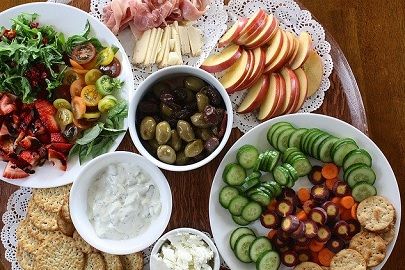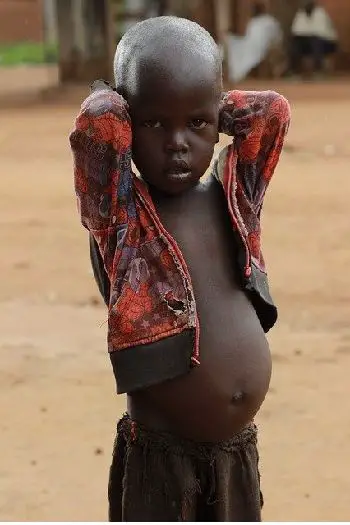Kwashiorkor is the severe protein deficiency in the children, while marasmus is the severe deficiency of the nutrients and insufficient intake of calorie. This is the primary difference between the two.
Protein-energy malnutrition (PEM) or Protein-calorie malnutrition (PCM) is the result of the deficiency of the carbohydrates, fats and especially proteins. The above two diseases, which are kwashiorkor and marasmus, are the commonest among such deficiencies and is frequently occurs in infants and children between 1 – 5 years of age. This is the reason for the mortality rate among children below the age of 5 years and even their sickness.
These diseases are noticed in developing and emerging countries, due to lack of healthy and nutritious food, with the lack of sanitization, as this can cause bacterial infections in such children. So, proper proteins and carbohydrate-rich foods like bread, potatoes, fish, egg, milk and its product and above that mother’s milk are mandatory, that should be given to children properly.
In this article, we will discuss the general differences between the two types of disease, that are life-threatening for the children upto five years, if they are not provided with the proper and healthy diet, which are rich in fats, carbohydrates and proteins.
Content: Kwashiorkor Vs Marasmus
Comparison Chart
| Basis For Comparison | Kwashiorkor | Marasmus |
|---|---|---|
| Meaning | The deficiency of protein in the body of children upto three years leads to the kwashiorkor. | The deficiency of calories and other nutrition in the children of upto one year leads to marasmus. |
| It occurs due to | Deficiency of proteins. | Deficiency of calories, proteins and other nutrients. |
| It occurs between the age. | Kwashiorkor occurs in children between the age of six months to three years. | Marasmus occurs in children between the age of six months to one year. |
| Characteristics | Acute illness, trauma, infections, measles, sepsis are some of the causes of the kwashiorkor. | Chronic infections, prolonged starvation, recurring infections are some of the significant causes of marasmus. |
| Muscles and limbs get thin. | Limbs get thin. | |
| Oedema (when an excess of watery fluid is accumulated in the tissues or cavity of the body) is present. | Oedema is absent. | |
| Subcutaneous fat (harmless fat present under the skin and protect against some pathogens and disease) is present. | Subcutaneous fat is absent. | |
| Typical weight loss is observed. | There is severe weight loss. | |
| Enlargement in fatty liver cells. | No such enlargement is observed. | |
| Appetite is prodigious. | Appetite is poor. | |
| Cracky skin appears. | Wrinkled and dry skin appears. | |
| No prominent ribs. | Prominent ribs. | |
| High mortality. | Low mortality, until the condition, is severe. | |
| Required care | Intake of sufficient amount of proteins. | Intake of sufficient amount of carbohydrates, proteins and fats. |
Definition of Kwashiorkor
One of the types of malnutrition usually occurs in famine and drought areas. It occurs due to insufficient protein in the diet. Symptoms include slow growth, weight loss, fatigue, irritability, muscles wasting, weight loss, enlargement of abdomen and liver, skin changes, swelling, frequent infections and weakening of the immune system.
If the body develops ill effects like intellectual disability and short stature due to the kwashiorkor, it cannot be corrected. Mainly children are affected due to kwashiorkor, than the adults. It gets started when the infants are deprived of the mother’s milk, and they get low-protein diet, even if the mother is protein deprived, it will affect the infant diet and his or her health also.
Another reason that can lead to kwashiorkor is the infection caused by the parasites, that effects the nutritional condition in the child. The prevention of kwashiorkor can be done by taking the diet rich in protein like egg, fish, meat, soy, dairy products and beans. It is treated by giving diet rich in carbohydrates, fats and sugars and then slowly followed by protein.
To digest the dairy products supplements of vitamins and minerals should be taken. Apart from it, treatments are also given for an electrolyte imbalance or kind of infections.
Common symptoms are enlarged liver, frequent infections, diarrhoea, abdominal swelling, irritability, muscle wasting, changes in hairs and nails, weight loss, changes in the skin (cracking, peeling, pigment loss, patches)
Definition of Marasmus
The severe type of malnutrition that arises due to the deficiency of calories and proteins is known as marasmus. It is the chronic infections that affect the muscles and tissues of the body. This deficiency of nutrition can leads to insufficiency of vitamins also and can lead to complete starvation.
Marasmus is considered as one of the major health issue related to the protein-energy malnutrition (PEM) in the world. It is the most severe problem faced by the children in developing areas like South Asia, Africa, and Latin America, the main reason is the inadequate supply of healthy food, intake of contaminated water and above that poverty.
The infections also develop due to drinking of contaminated water, that contains parasites, bacteria which enter the body and worsen the condition.
Symptoms of marasmus may vary on the ground of severity and other related conditions and infections. However, some common are dizziness, fatigue, chronic diarrhoea and weight loss.
Treatment may also vary, if the problem is due to deficiency of nutrition, it can be cured by providing a proper diet rich in a healthy diet; but if the problem is related to other conditions such as bacterial or any other infections, the additional treatment should be given.
One can lower the risk of marasmus, by giving proper and healthy diet, drinking sanitized water, discuss the health-related issues to the medical professionals.
Key Differences Between Kwashiorkor and Marasmus
Following are the critical points to understand the general differences between kwashiorkor and marasmus:
- Kwashiorkor is the deficiency of protein in the body of children upto three years. In contrast, Marasmus is the deficiency of calories and other nutrition in the children of upto one year.
- Kwashiorkor occurs due to deficiency of proteins, and marasmus occurs due to deficiency of calories, proteins and other nutrients.
- Kwashiorkor occurs in children between the age fo six months to three years, whereas marasmus occurs in children between the age of six months to one year.
- Acute illness, trauma, infections, measles, sepsis are some of the causes of the kwashiorkor. However, marasmus is the chronic infections, and prolonged starvation, recurring infections are some of the significant reasons.
- In the case of Kwashiorkor, muscles and limbs get thin, oedema, subcutaneous fat is observed, whereas, in the case of marasmus, only limbs get thin, oedema, subcutaneous fat is absent.
- Typical weight loss is also one of the remarkable features of kwashiorkor, with enlargement in fatty liver cells, cracky skin, prodigious appetite. In contrast, in marasmus also there is severe weight loss and skin appears to be wrinkled and dry, and appetite is low, although there is no such enlargement in fatty liver cells.
- In the case of Kwashiorkor, there are no prominent ribs, high mortality rate, in marasmus, prominent ribs are there and low mortality until the condition is severe.
- Intake of sufficient amount of proteins can prevent the occurrence of kwashiorkor, while intake of adequate amount of carbohydrates, proteins and fats is the way to avoid the marasmus.
Conclusion
So, we can say a healthy and nutritious diet is the one that contains the components rich in fats, carbohydrates and proteins. If one is failing to get enough quantity of these key nutrients, it will result in nutritional deficiencies, and that will indeed worsen the status of your health. Therefore, eating healthy and nutritious is the best way to take care of your health. One can also consult the health care professionals regarding their diet as per their age.



Leave a Reply